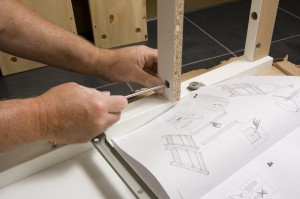How many 72 year olds can claim to have lowered their prices by over 2% every year since 2000 thanks to increased efficiency? Well, the behemoth IKEA can, which goes a long way to explain some seriously enviable stats.
821 million people visited an IKEA store last year; to put it into context, if all the visits were to one store, then the line would go 6.5 times round the planet! Add a further 1.6 billion website visits (every time, you blink someone visits their site), giving them 30.1 billion euros (or nearly $34 billion) in retail sales, up 2.7% from the year before. A little known fact about IKEA is that although it operates as a non-profit, its foundation is unofficially the world’s largest charitable organisation.
You’d think that as the world’s largest furniture retailer and one of the largest consumers of wood that might be sufficient to keep you busy — but no! In support of its aim to promote “innovations in architecture and interior design” (and unofficially in my view to occupy our whole world) they have a number of far more blue sky or “out of the flat pack” initiatives than a new Billy bookcase.
- The BoKlok branded flat pack homes and houses, 36 of which have already been erected in Tyneside in England. Not a new idea, as Sears Roebuck and Company did the same in the 1920s, but given the housing shortages in the developed world, a much-needed reinvention by the flat pack king.
- The Moxy, an affordably-priced chain of seriously cool hotels, appropriately launched in Milan as part of the Marriott chain with further launches planned across Europe and the US.
- Strand East – the IKEA mini-City being built in East London close to the QE Olympic Stadium in an area crying out for regeneration. Again, not a brand new idea if you think of both Cadbury in the UK and Hershey in the US both building villages for their workers in 1905, but a 21st century version.
Closer in, but a potential game changer, is the launch this year of the “Wireless Charging Collection”. This debuted in Europe and is now in the US, and consists of a range of lamps and nightstands with built-in wireless charging, standalone charging pads and charging units that can be installed anywhere with a special drill bit. No bedside table will ever be the same – inspired thinking!
However, for really blue sky thinking the Swedish retailer debuted (last week) their response to the challenge of maximising space in ever shrinking apartments. Over the last two years they have explored how to bring movable walls and sliding power sockets to the masses in an apartment in Malmö in Sweden. They have trialled various features that enable inhabitants to reshuffle their apartment layouts for greater flexibility and privacy, for example a movable wall in the living room can turn half of the space into a bedroom, whilst one in a bedroom can create a walk-in closet. These have been “live” tested with real families, and Mikael Ydholm, the company’s head of research, estimates that these new products may appear in IKEA catalogues in only three years’ time.
Ikea has been pulling out all the stops in its attempts to stay relevant and continue its appeal to its wide community as earlier this year; CEO Peter Agnefjall admitted that the company had been slow to embrace eCommerce, which had taken the furniture world by storm. With initiatives like these, and their collaborations with Dutch furniture designer Piet Hein Eek, best known for his scrap-wood furniture made from timber offcuts, and their first fashion show held in Milan last week with avant-garde fashion designers Katie Eary and Martin Bergström for two fashion-inspired home goods collections, they can definitely claim they’re not going to sit this one out!
5 key lessons from IKEA for out-of-the-flat-pack thinking:
- IKEA’s initiatives may seem varied, but they are all within their sphere of competence, and when that is not the case they partner with those who already have the skills.
- Seek creative input and perspective from people who think differently to you and look at your opportunities through a different lens. Get close, then get even closer; the more extreme the better! Combine imagination with knowledge.
- Think to the future and what your customer’s future needs, wants and believes could be.
- Experiment, explore, test launch and learn, and then do it all over again.
- Cover all your bases, and look to short, mid and long term opportunities, both close-in and break-through.
None of these are necessarily new, but it is very seldom that all are seen put into practice!



